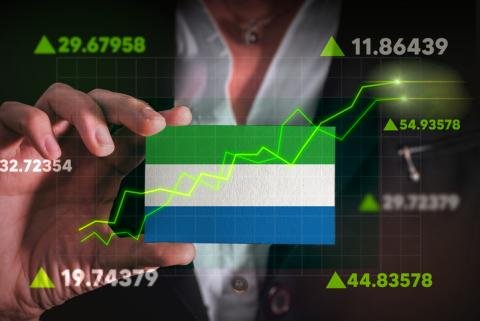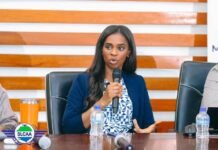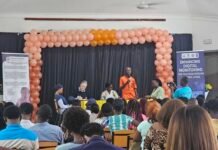By Steven Ferewa Kamara
The Sierra Leone story of the last four decades is not one of stellar achievements and hope. Much transformational changes have not taken place on economic and social fronts. This is as a result of the several mega challenges and risks which have been faced at the national, regional and global levels.
Sierra Leone is located on the southwest angle of West Africa. It is home to close to eight million people and provides easy access to a market of 30 million via its membership in the Mano River Union (MRU) with Cote d’Ivoire, Guinea, and Liberia, and a market of over 225 million people in Economic Community of West African States (ECOWAS). Sierra Leone provides duty-free access to large markets like the European Union (EU) and United States (U.S) under treaties such as the EU Everything but Arms Initiative and U.S. African Growth and Opportunity Act (AGOA).
Concurrent national and global shocks hampered Sierra Leone’s post-pandemic recovery and exacerbated the country’s pre-existing macro-fiscal vulnerabilities. Record levels of inflation and currency rate depreciation led to a downturn in economic activity and a serious crisis in the cost of living. Due to policy lapses and macroeconomic headwinds, the fiscal accounts have gotten worse, and the risks associated with the sustainability of the debt have increased.
The revised estimate of GDP growth for 2022 is close to 3%, which represents a reversal of the positive bounce seen in 2021 (growth of 4.1% after a 2% decline in 2020). In 2022, headline inflation averaged 27%, up from 12% in the year before. The Leone’s 60% depreciation in 2022 and lax fiscal measures contributed to an increase in inflation despite a decline in the price of food and fuel globally.
The Bank of Sierra Leone strengthened its monetary policy stance during the course of the year. However, fiscal domination and undeveloped financial markets restricted the efficacy of monetary policy, and the redenomination of the Leone made matters worse. Risks to the sustainability of debt and fiscal problems have increased. The external accounts also declined, and as a result of central bank operations in the foreign exchange market, reserves by the end of 2022 dropped from about four months’ worth of imports to about three months.
Sierra Leone’s gross domestic product (GDP) in 2012 is $ 3.8 billion The World Bank estimates Gross National Income (GNI) per capita for Sierra Leone was $580 in 2012. This translates to over 72 percent of the population living on less than $1 per day, in extreme poverty. Sierra Leone remains largely dependent on foreign aid even though the country has large deposits of iron ore and other minerals.
The economy is projected to grow at 3.8% on average during 2023 – 2025, below its long-term average, supported by:
the Government’s efforts to restore macro stability through fiscal discipline and prudent monetary policy;
ii. continued expansion of iron-ore mining operations; and
iii. some modest easing of inflationary pressures. Fiscal discipline will be crucial to restoring macroeconomic stability; the fiscal deficit is projected to decline below 3% of GDP by 2025.
However, this is vulnerable to several downside risks especially given recent fiscal slippages and expenditure overruns, which have raised concerns about the credibility of the budget process. The international poverty rate ($2.15 per person/day at 2017 PPP) is projected to decline slowly, from 26.1 % in 2018 to 24.6% by 2025”.
The economic development of Sierra Leone has been forced by concurrent international and national shocks. Macroeconomic management remains weak. Fiscal pressures have progressively intensified, the debt burden has worsened, and inflation has soared, driven by global supply shocks, exchange rate depreciation, and deterioration in the terms of trade – in addition to internal imbalances.
In an environment with insufficient social safety nets, the cost of living is rising in tandem with sluggish growth and deteriorating macroeconomic fundamentals, posing a threat to rising poverty rates.
The economy’s future is dependent on both internal and external events. Increased inflation brought on by changes in food and energy prices as well as less accommodating monetary policy in developed nations may have a negative impact on domestic development and the global economy. Domestic macroeconomic stability and resilience in the face of international concerns will be facilitated by political stability, as well as the willingness and efficacy of the Government’s economic strategy.
The country was aiming to become a middle-income nation by 2035 prior to the Ebola outbreak in 2014, but the nation’s post-conflict characteristics such as high unemployment, corruption, and ineffective governance remain.
The costs of missing the nation’s century are Huge. So are the Challenges of achieving the potential of the Sierra Leone’s era. The Sierra Leone Century: Plausible but not Pre-ordained.






